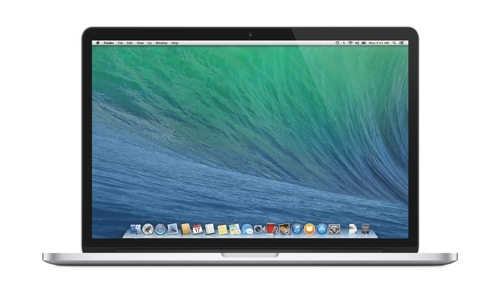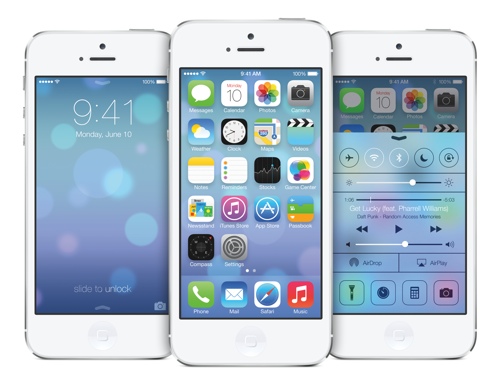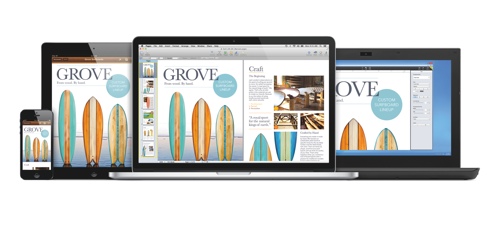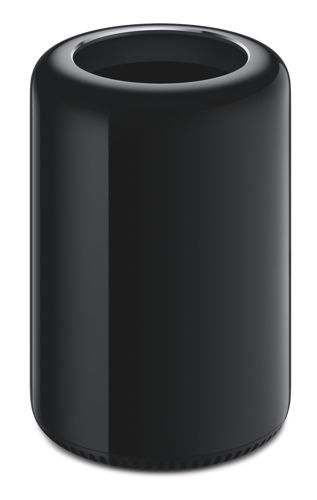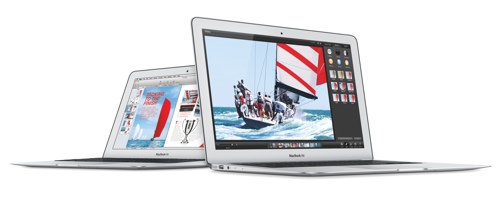This year, Apple made some important announcements at the Worldwide Developers Conference (WWDC) in San Francisco. In a keynote surrounded by speculation over Jony Ive’s redesign of iOS, Apple leadership announced a renewed MacBook Air product lineup, released developer beta versions of iOS 7 and OS X Mavericks, announced the new iTunes Radio service and gave a sneak peek at the new Mac Pro.
WWDC Keynote
The first thing I noticed in the WWDC keynote wasn’t related to tech at all, though. This was the first truly post-Jobs keynote: the script changed. Now we see a more confident Tim Cook presenting the company’s vision and strategy, a more comfortable Phil Schiller showing up the new hardware and a new great, pleasant surprise — Craig Federighi talking about the new software. I liked the new format. The keynote was focused and fun to watch, in contrast with Google’s 3-hour keynote at Google I/O 2013, which was unfocused, boring and tiresome.
Let’s go through the tech stuff presented at WWDC now, starting with OS X Mavericks.
OS X Mavericks
OS X Mavericks is the next update of OS X, which will be available this fall. According to Apple, it has over 200 new features. At WWDC, Craig Federighi highlighted a few during the keynote:
- Finder Tabs: the name pretty much says it all. You may now have tabs inside Finder windows, just like in any web browser — the structure is actually identical to Safari’s. This is very useful for people who like to run it in full-screen.
- File Tags: OS X now allows tagging of files when saving documents. A new Tags section shows up in the Finder’s sidebar, so you may access the files of a particular tag easily. The tags are also color-coded, making organization easier — think about a GMail-like approach to files. This is a very welcome feature that will decrease the file system learning curve for non-tech savvy people.
- Proper multiple displays support: if you ever used Lion or Mountain Lion full-screen apps with multiple displays, you may already have noticed that annoying grey screen in the extra displays, which made the full-screen feature pretty useless for us who rely on multiple displays. Not anymore, though. Now full-screen apps work properly with multiple displays, as well as the dock and the menu bar. As a plus, you may now use an AirPlay-enabled device as a second display (your TV via Apple TV, for instance).
- OS internals enhancements: some welcome updates you won’t see, but will definitely notice — better scrolling, power-throttling for background apps, compression for inactive memory to avoid disk swap, and many others.
- Safari: the web browser got a lot of improvements under the hood (better caching, faster JavaScript performance), and a few extra features — Shared Links, which integrates with your Twitter and LinkedIn feeds and displays links posted by people you follow; and support for iCloud Keychain, a multi-(Apple)platform password manager, very similar to the popular 1Password app.
- Better Notifications: you may now reply inside some of the notifications, like Mail and Messages, get notifications from your iOS devices, receive and dismiss FaceTime calls from the notifications, update apps in the background and see your Notifications from the lock screen.
- New Calendar: no more ugly skeumorphic design, link to Facebook events and new inspector with maps and weather information.
- iBooks and Maps: these two apps come from iOS to the Mac.
Apple says OS X Mavericks will be available this fall.
iOS 7
A lot of speculation was going on the internet before the WWDC announcement, and most of them were correct. Jony Ive’s redesign of iOS shows us a new, flat design. Typography and icons have been revamped, translucent textures replace the old skeumorphic designs, background wallpaper changes in a parallax effect using the accelerometer when you move the phone, new animations were added, and, of course, there are a bunch of new features as well. Some of the features highlighted at the WWDC keynote:
- Control Center: basic settings toggles can be accessed from a new menu, accesible by swiping from bottom up — Airplane mode, WiFi, Bluetooth, Do Not Disturb, Screen orientation lock, Brightness, Music app controls, AirDrop, AirPlay, a new Flashlight, Alarms, Calculator and the Camera. Very similar to Android’s two-finger swipe menu, but with a few extra functionality.
- True multitasking: added support for true multitasking for apps, while preserving battery life. Adaptive data polling and opportunistic updates allows true multitasking while keeping energy consumption low.
- Safari: redesigned, with true tabs support, and the same features as shown for OS X Mavericks.
- AirDrop: peer-to-peer WiFi file sharing for Macs and iOS devices, just like we already had on the Mac. This is a much better approach than NFC for file sharing, although I’d like it to be cross-platform compatible.
- Camera and Photos: these apps were redesigned to incorporate some popular features of other apps, like camera filters. The new Photos app also intelligently organizes the photos in Moments, by using date and geotag information.
- Siri: new voice options, more control options, integration with Twitter and Wikipedia and search results from Bing, which shows a developing relationship between Apple and Microsoft, as competition against Google increases.
- App Store: redesigned store, plus the ability of upgrading apps automatically in the background, like in Android.
- Music: redesigned Music app, plus support for the new iTunes Radio service. iTunes Radio is a Pandora-like service, free with ads, or ad-free for iTunes Match subscribers ($25 per year). The service will launch in the U.S. at first, with other countries following afterwards.
iOS 7 will be available for iPhone 4 and later, iPad 2 and later, iPad Mini and the 5th generation iPod Touch in the fall.
iWork for iCloud
During the WWDC keynote, Tim Cook and Roger Rosner showed a new version of the iWork productivity suite, iWork for iCloud. This office apps suite (Pages, Numbers and Keynote) is very well known by Mac users, as it is the direct competitor of Microsoft Office in the Apple ecosystem. Now, a new offering is available, and it works in the web browser, on both OS X and Windows.
In the demo, it looked pretty good, much like its counterpart running on the Mac. The new offering is currently available as a beta for registered developers, and will roll out to all users in the near future.
New Mac Pro
The Mac Pro had been left behind for a few years, featuring the same early 2000’s look and sheer size. Well, not anymore. As shown during the WWDC keynote, the new Mac Pro is completely redesigned: housed in a 9.9″ tall cylindrical case, it packs serious horsepower under the hood in an all-new, thermal-efficient design. The new design is a bit controversial, but although it looks like a garbage can, I like it.
The new Mac Pro packs Intel’s Xeon E5 processor, 3rd-generation PCI Express bus, 1866 MHz ECC DDR3 RAM, dual AMD FirePro GPUs and will be able to drive two 4k displays simultaneously. Instead of using traditional SATA hard drives or SSDs, Apple chose PCIe-based flash storage.
Not everything is awesome, though. There are no expansion slots available, so if you need new PCI-Express cards added, you’ll have to buy a Thunderbolt expansion chassis in order to install them.
No pricing or release date was disclosed at WWDC. It is worth noting that this Mac will be made in the USA.
New MacBook Air and AirPort units
Apple has also refreshed the current lineup of MacBook Air models during the WWDC. The new models are powered by Intel’s new Haswell ULT processors and offer all-day battery life — 9 hours for the 11″ model, 12 hours for the 13″ — without sacrificing performance: 40% faster graphics (due to the new Intel HD5000 chipset) and 45% faster overall, when compared to the 2012 MacBook Air.
Price hasn’t changed, but the cheapest model now starts at 128GB SSD, instead of 64GB, which is a nice bump.
Another refreshed product line was the networking products. The new AirPort Extreme and Time Capsule are much smaller, offer better signal through a beamforming antenna array and now support 802.11ac.
Both product lines are shipping now.
Closing
This wasn’t the best WWDC ever, but I liked what I saw. The new OS X is not revolutionary, but is going in the right direction — Tags make it easier for non-tech people keep track of their files, iCloud Keychain helps improving security while improving user experience, and some annoying issues from Lion and Mountain Lion (like multiple displays support for full-screen apps) were fixed.
iOS 7 looks very good for a first beta, bringing some very welcome updates to the already dated UI. The software now merges nicely with the sleek hardware design — the old, skeumorphic design looked out of place in the iPhone 5. In addition to the cosmetic changes, the improvements under the hood look good and will make the user experience better. iOS now looks at least competitive against the latest versions of Android and Windows Phone, UI-wise.
The new services, if successful, will help Apple immensely, since they may prove that the company can also do services well. So far, although the iTunes ecosystem is tremendously successful and popular, it has a lot of problems, and the Maps episode didn’t help either. Apple now has a chance to show the world that it can also provide great quality services through iTunes Radio and iWork for iCloud. Let’s see how this develops.
My favorite snippet from WWDC was the new Mac Pro. I wasn’t expecting such a radical redesign and I am very impressed. I’ll probably buy one to replace all my current machines. A disappointment was the fact that only the MacBook Air line was updated. I wished they had also updated the Retina MacBook Pro to get the Haswell processors there too.
As for the conference itself, I liked most of the sessions. It was okay. The WWDC keynote was a pleasant surprise, because it now shows clearly that Apple has left the Steve Jobs era behind. Let’s see where this will lead the company.
* all images are property of Apple Inc. Used with permission.
